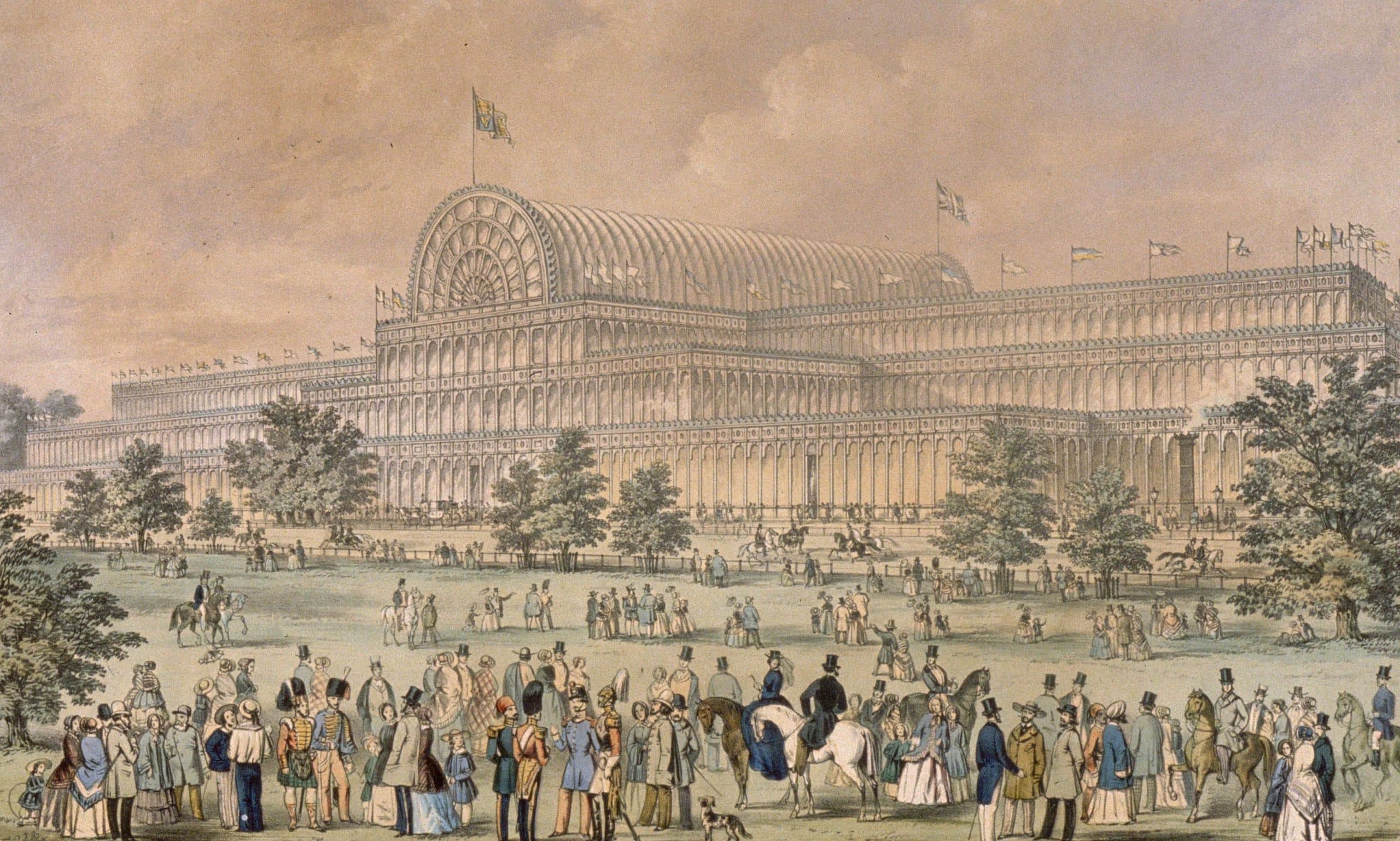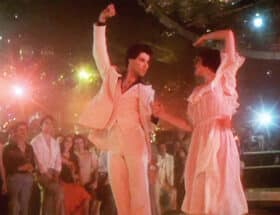Originally published by Pauline Weston Thomas
Last update by our editorial team: 12/06/2022
The Great Exhibition of 1851 was championed by Prince Albert in a bid to promote peace and cutting-edge technology while encouraging understanding and brotherhood between nations.
It was also known as The Great Exhibition Of The Works Of Industry Of All Nations, or The Crystal Palace Exhibition, taking place from May 1 to October 15, 1851.
Inspired by The Great Exhibition of Products of French Industry in Paris, it was the first exhibition in a series of world fairs. It exhibited culture and industry, and became extremely popular in the 19th century.
Hosted in Hyde Park, the Great Exhibition of 1851 was the first international exhibition to ever take place. The historic event was held inside the Crystal Palace, a huge three-tiered glass building that featured fully grown elm trees.
Crystal Palace: Home of the Great Exhibition
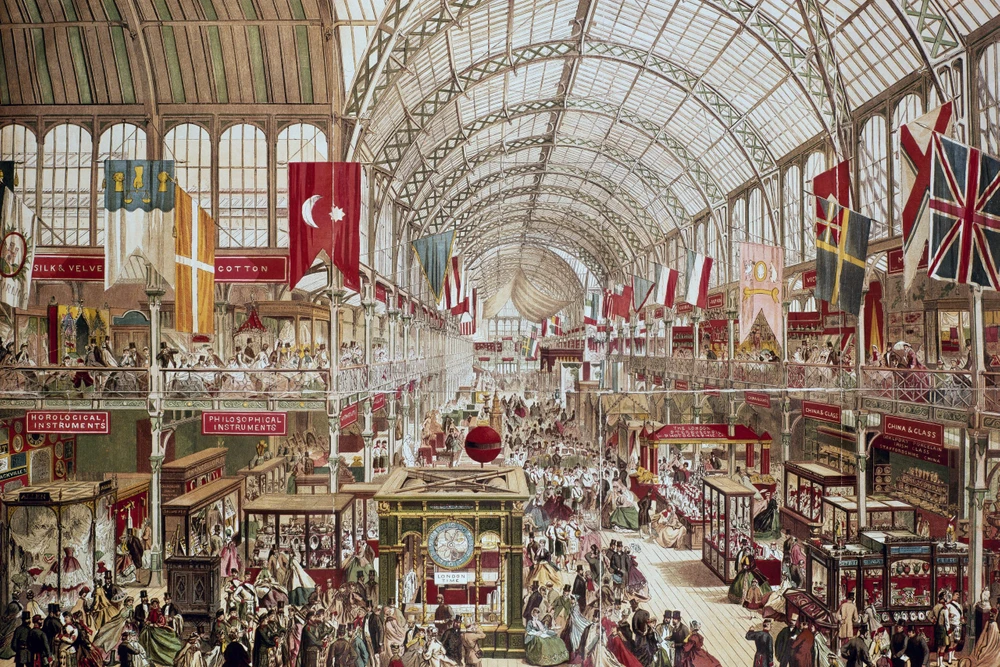
The Crystal Palace that housed the Great Exhibition of 1851 was an impressively large, temporary greenhouse, constructed completely of iron and glass. The colossal building was designed by Joseph Paxton. It was considered a great wonder of the world and extremely ahead of its time. It was an intricate structure, made with prefabricated parts that could be taken apart after the event.
Surprisingly, the Crystal Palace did not greatly influence or impact architecture then. However, modern architecture — with its iron frameworks and glass facades — may owe something to this 19th-century marvel.
The middle of the building had a famous fountain that stood 27 feet high and was made of four tons of pink glass.
A feat of engineering, the Crystal Palace stood 562 meters long, 124 meters wide, and stood 30 meters high over Hyde Park.
Exhibition Statistics
Spanning a period of 141 days, the Great Exhibition of 1851 hosted around six million visitors, all enthusiastic to see the innovative creations from across the world.
With around 100,000 fascinating objects displayed over 10 miles of space, the Great Exhibition rightly earned its name. It owed much of its success to its more than 15,000 contributors. Generating around £186,000 in profit, the Exhibition's revenue played a major role in funding the South Kensington museums.
The Great Exhibition of 1851: Cost of Entrance
The Exhibition was inaugurated by Queen Victoria on May 1. Throngs of people from different social and economic backgrounds, cultures, and ages flocked to witness its wonders.
At first, the price for admission to the Exhibition was £3 for gentlemen and £2 for ladies.
The price for admission tickets varied depending on the day to ensure that everyone could get a chance to see the exhibits.

Entrance fees ranged from 3 guineas, £1, five shillings, and one shilling.
From May 24 onwards, the masses could enjoy the marvels within the Crystal Palace for just a shilling a head while Saturday mornings were reserved for invalids. This ensured that there was no discrimination and that all kinds of people could attend.
Factory workers, villagers, and schoolchildren all visited the exhibition. There was such a fervor to visit it that travel agent Thomas Cook organized special excursion trains! A third-class return ticket from York was priced at just five shillings, allowing visitors to enjoy the exhibition and return home for just six shillings.
The cheap tickets majorly contributed to the exhibition’s success since they enabled industrial workers to afford the price of admission. This inclusivity caused the exhibition to earn 4.5 million shillings from the one-shilling tickets!
A Foreign Experience
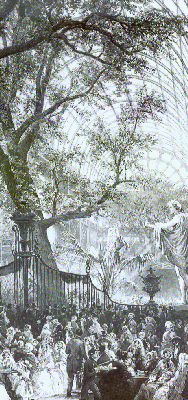
Crystal Palace
The Great Exhibition of 1851 was the first of its kind because it offered visitors an opportunity to witness foreign objects and exhibits.
Many of the items on display were only previously accessible to the wealthy who were in the habit of going on expensive foreign tours.
Curious onlookers were thoroughly entertained by their first taste of exotic items and food. Ice cream and jelly were novelties at the time and many people got to taste them for the first time because of the event!
By offering visitors a glimpse into other cultures, the Great Exhibition accomplished its aim of inculcating a sense of peace and brotherhood. It provided an unforgettable foreign experience for the price of one shilling!
Inspiration for the Victoria and Albert Museum
The Great Exhibition was a collaborative effort between Prince Albert and Henry Cole. After 16 months of preparation, they launched an exhibition that was globally renowned. Its influence on culture is evident even today.
Inspired by the exhibits, Prince Albert encouraged British industry to become a larger competitor in the international marketplace than it already was. He thus decided that it would be beneficial for the profits of the exhibition to be directed towards developing education and manufacturing.
Meanwhile, Prince Andrew was likewise persuaded to create a cultural district devoted to scientific and artistic education in South Kensington. The goal was to educate manufacturers, designers, and the general public about science, design and art with colleges and museums.
The Victoria and Albert Museum was thus inspired by the Great Exhibition, an initiative that enhanced learning and encouraged the spread of knowledge. The Museum was founded in 1852 and was later moved to Exhibition Road in 1857, thereby cementing the legacy as a beacon of education and culture.
What Was on Show at the Great Exhibition of 1851?
The Great Exhibition of 1851 had over a hundred thousand objects on display with half the space occupied by British exhibits. These showcased interesting things from across the Empire, including condensed milk and the Kohinoor diamond from India which was considered the “Lion of the Exhibition."
It featured objects from 48 other countries as well, from Russia to Chile.
France showcased tapestries and silks from Lyon as well as the cutting-edge machinery that it used to manufacture them. It was also the largest foreign exhibitor.
Russian objects included malachite vases that stood 3.5 meters tall, stunning furs, and Cossack armor. The Swiss displayed gold watches. Denmark was represented by a single-cast iron piano frame which was the first of its kind in Europe. Chile sent a 50 kg lump of gold. Meanwhile, a giant statue of an eagle holding a stars and stripes flag and a Bell telegraph were part of the USA’s contributions.
Opening of the Great Exhibition of 1851
The opening of the Great Exhibition was attended by 700,000 people who wanted to see the Queen inaugurating the event.
At 11:30 am on May 1, the Royal cortège journeyed from the Palace towards Hyde Park. The sun shone brightly on the Crystal Palace, which gleamed in the light, as the organ played along with 200 instruments and 600 voices.
The national anthem was sung, after which Prince Albert read the Report of the Commissioners to the Queen. The Archbishop of Canterbury then offered a brief prayer and the grand state procession walked along the length of the nave.
Once the procession returned to the starting point, Lord Breadalbane proclaimed the exhibition open.
All of this took place amid the excited cheers of onlookers.
Queen Victoria Dress on Opening Day
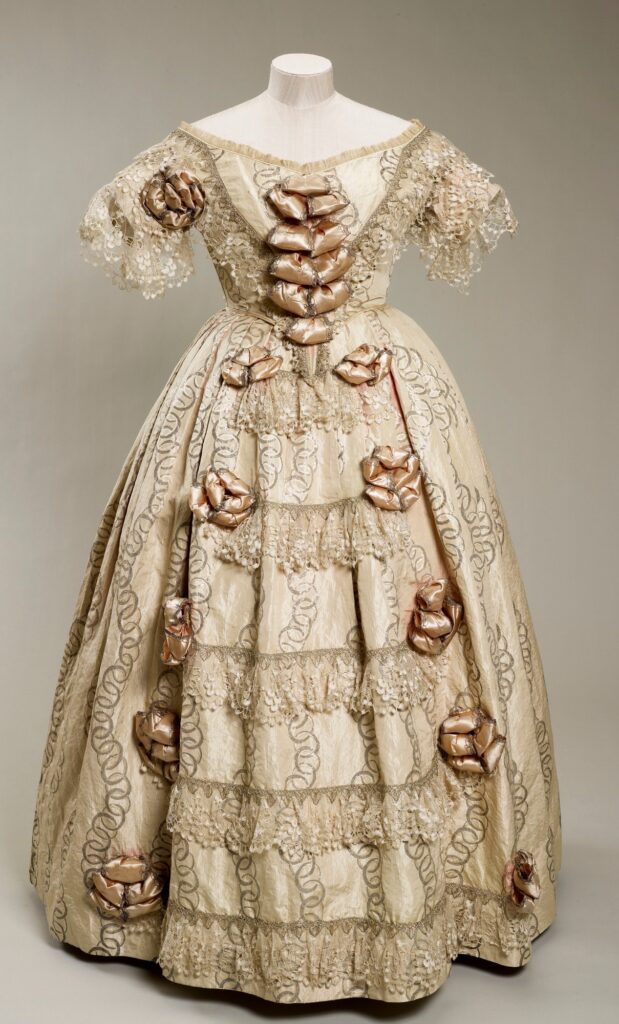
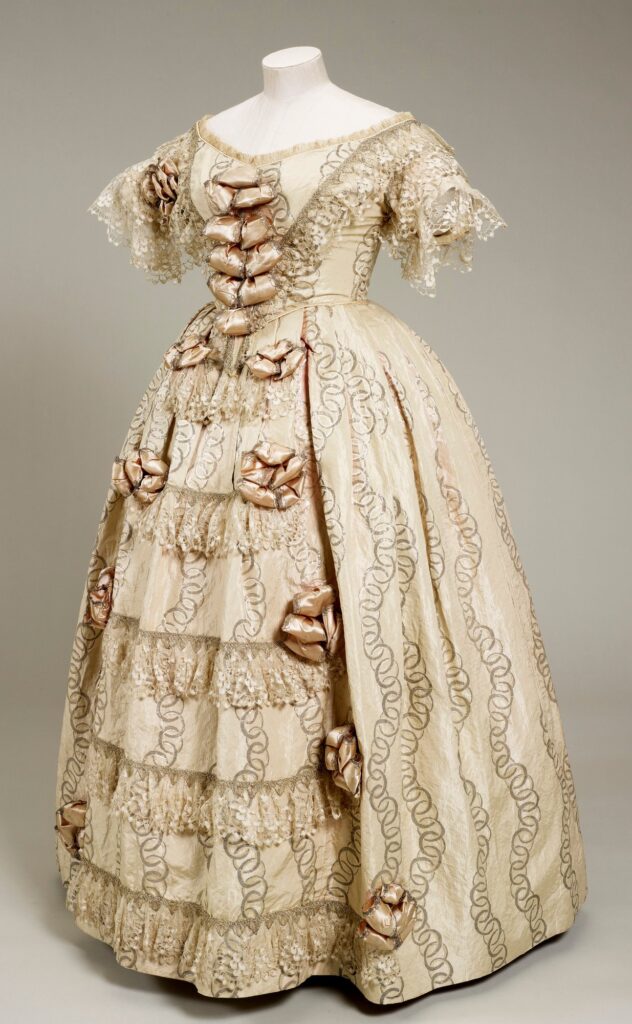
The gown Queen Victoria wore to the exhibition’s inauguration featured a separate bodice on top of a Spitalfields silk skirt. In front was a scooped neckline with a silk tulle trim and lace embellishments. Many admired its intricate embroidery, silver thread, ruffled sleeves, and the stylish V-shaped dip in front that graced the waist area. The elaborate skirt was pleated over the hips and had layers of lace spilling from the front.
How Other Attendees Dressed for the Great Exhibition
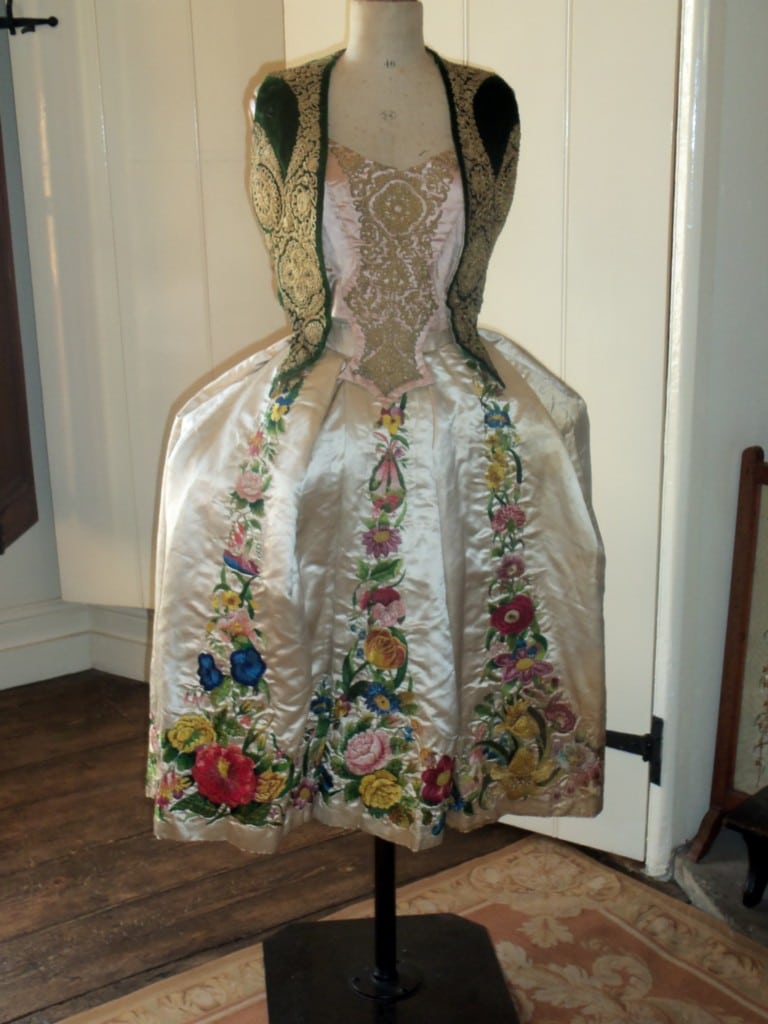
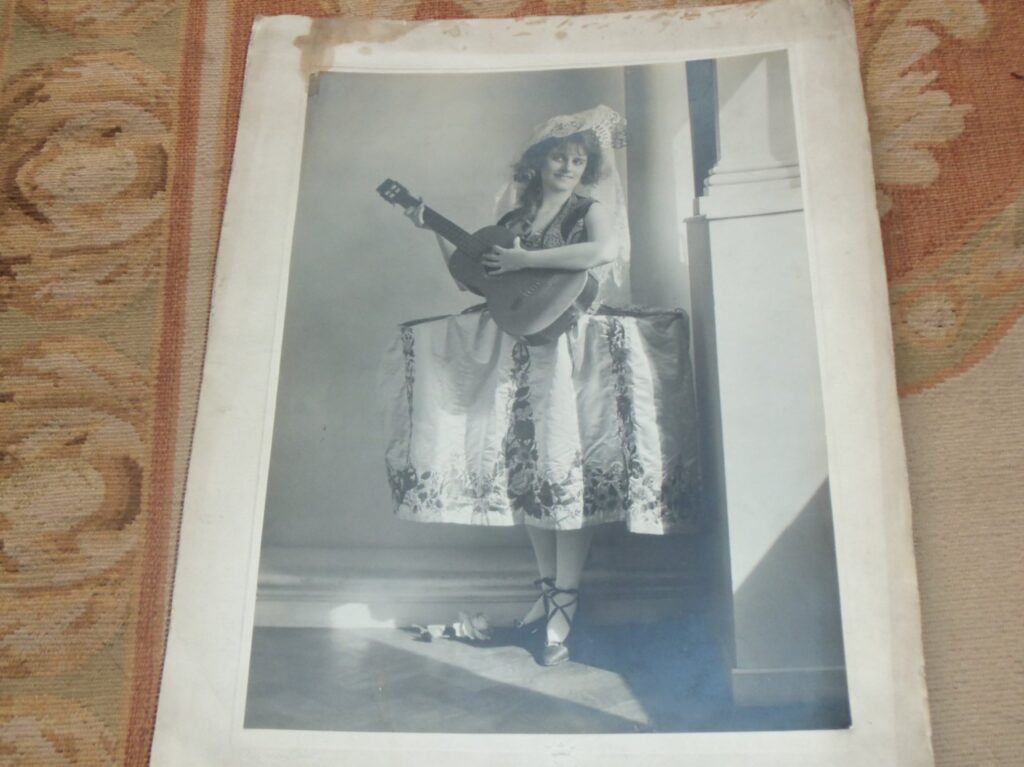
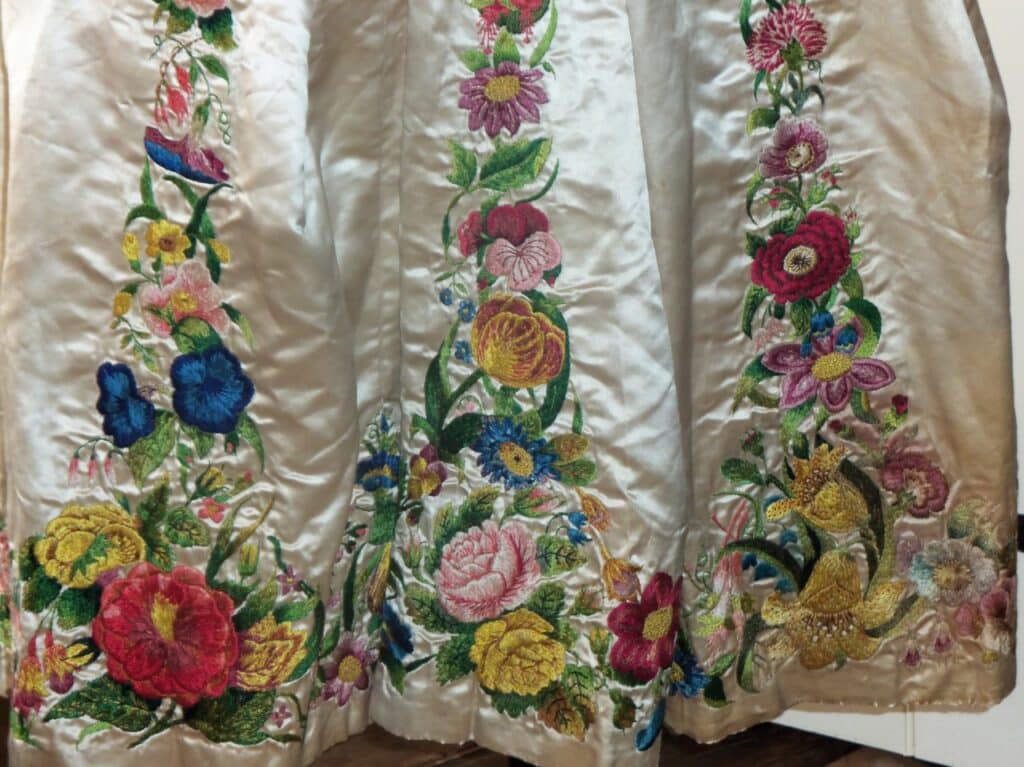
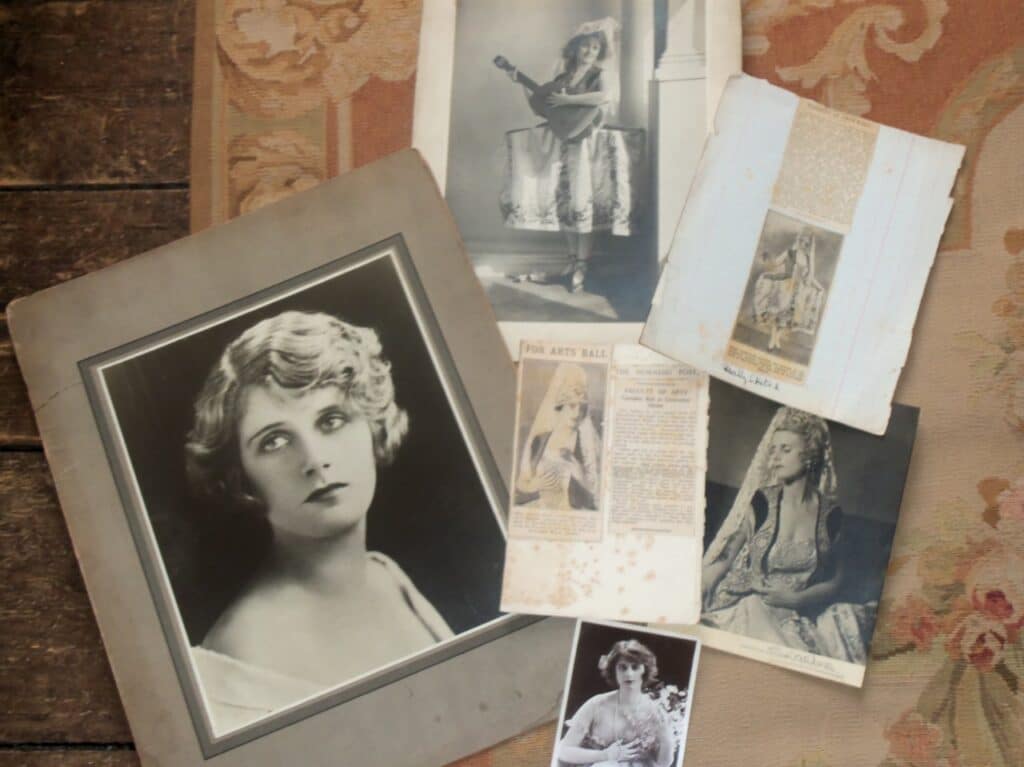
Country folk wore gaiters and smocks to the exhibition while those who belonged to the upper classes dressed elaborately as was befitting their stations.
Take, for instance, this embroidered silk gown that a socialite and actress named Athalie Davis wore to the event. Exhibiting a 16th century Spanish style, the dress used no less than 400 skeins of silk thread in its creation.
Its most eye-catching part is the skirt which features intricate embroidery all around. Columns of embroidered flowers were carefully stitched from the waist down to the hem, adding to its timeless beauty.
A quote from the seller Isabella of this dress "Obviously it is short. Now this could be because the glass display case at the Great Exhibition would only fit something of this height [thus is was made to measure the cabinet]. Alternatively, Athalie was a young and vibrant flapper, so could have had it shortened at the waist. I don't think we will ever know."
